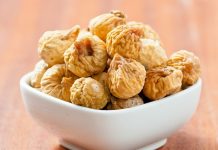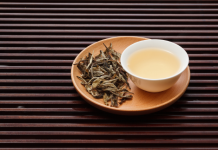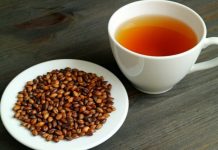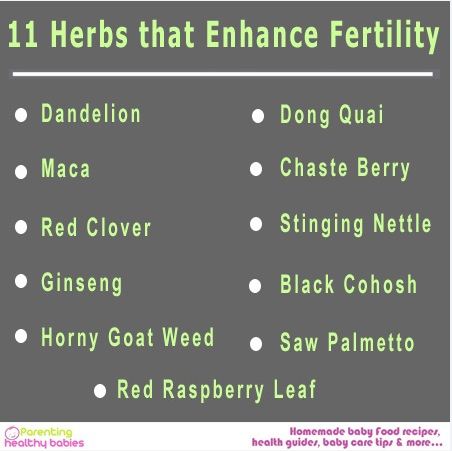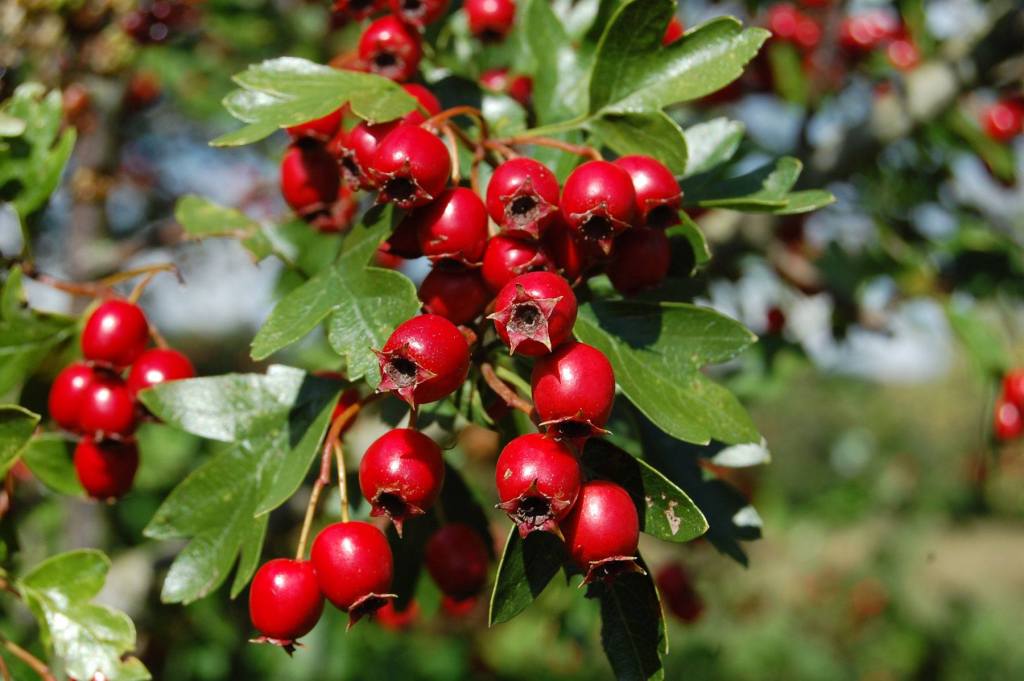The health benefits of papaya in baby food include supply of numerous vitamins and minerals, aids in digestion, kills intestinal worms, strengthens the immune system and acts as a natural laxative.
Papaya is a popular fruit which is generally grown in tropical countries. Papaya fruit is considered to be one of the best fruits with many health benefits. Some of which include improved digestion, a natural laxative, anthelmintic property or cure for intestinal worms, control of skin ulcers and strengthening the immune system. The size of the fruit generally ranges between 7 inches to 15 inches in length and 5 inches to 8 inches in diameter.
Papaya is believed to have originated in the Americas and spread to other parts of the world only after Columbus’ arrival on the coast of America. Today, it is one of the very popular fruits in the world, where it is produced even in non-native places such as Africa and Southeast Asia. Brazil tops the production of papaya in the world, with 1.7 mega tonnes of annual production.
Papaya for infants and children
There are many misconceptions about papaya being an abortifacient and contraceptive. This is true to some extent, as the unripe fruit possesses few biochemicals which can cause abortion and contraception. But, as the fruit ripens, the action of abortifacient biochemicals disappears.
Papaya is one of the best fruits that can be given to your child for his or her better health. The fruit contains numerous health benefits which come from the vitamins, minerals and the active biochemicals.
Some of the traditional uses of papaya
Traditional use of papaya as a medicine can be traced back to thousands of years. The whole plant has been traditionally used for its medicinal properties. The latex from the plant was used as anthelmintic, relief from dyspepsia and as a cure for diarrhea.²
Nutrition in papaya
The National Nutrient Database for Standard Reference from the US Department of Agriculture, the nutritional value of papaya includes
| Nutritional Value | Value per 100 g | Nutritional Value | Value per 100 g |
| Water | 88 g | Energy | 43 kcal |
| Protein | 0.47 g | Total Lipid (fat) | 0.26 g |
| Carbohydrate | 10.82 g | Total fiber | 1.7 g |
| Sugar | 7.82 g | Calcium | 20 mg |
| Iron | 0.25 mg | Magnesium | 21 mg |
| Phosphorous | 10 mg | Potassium | 182 mg |
| Sodium | 8 mg | Zinc | 0.08 mg |
| Vitamin C | 60 mg | Thiamin | 0.023 mg |
| Riboflavin | 0.027 mg | Niacin | 0.357 mg |
| Vitamin B-6 | 0.038 mg | Folate | 37 ug |
| Vitamin A | 950 ug | Vitamin E | 0.3 mg |
| Vitamin K | 2.6 ug |
Health benefits of papaya
There are numerous health benefits offered by papaya fruit. Some of which include
- Supply of essential vitamins and minerals: The presence of various vitamins and minerals in papaya makes it an ideal candidate for children and even infants under the age of 1 year to consume papaya. These vitamins and minerals are very much essential in bone development, brain development, immune development and the development of the whole body, between the tender months of infancy.¹
- Prevention and remedies for various diseases: The presence of vitamin A promotes good eye sight, decreases the chances of developing night blindness, removal of growth disorders, etc. Thiamin or vitamin B is useful in strengthening heart muscles, intestinal muscles and skeletal muscles. Riboflavin is useful for proper brain development by strengthening of nerve cells. Niacin or vitamin B3 promotes the formation of new cells, repair of old and damaged hereditary information and promotes nervous and gastrointestinal health. The high calcium and magnesium content is needed for proper bone and dental health. The iron present in papaya is needed to maintain healthy hemoglobin levels and red blood cell count.²
- Improves digestion: Indigestion can be easily removed by eating papaya fruit. Generally, indigestion can be seen in infants and children due to their weak digestive system. By feeding your child with papaya, you can make sure that indigestion never bothers them. There have also been notes in historical writings about the experiences of Spanish soldiers who ate papaya fruit and their indigestion disappeared.²
- Natural laxative: Papaya consumption is also helpful in controlling constipation in the body. If your child is suffering from constipation, then give them papaya slices in the evening and after dinner. The dietary fiber present in papaya is ideal in clearing off bowels.
- Anthelmintic properties: Infants and children usually face the issue of parasitic worms in the intestine. Different types of worms can infect a child’s gut and play hide and seek. Giving them a small amount of dried papaya seeds with honey can be useful in controlling parasitic intestinal worms. The enzyme cysteine proteinases found in the latex of papaya has also been noted to be an effective remedy against intestinal worms.²
- Controls skin ulcers: Papaya fruit is also useful as a dressing for skin ulcers and burns. The fruit dressing is also been known to be tolerant by children as well. The fruit pulp, when applied prevents burn infections. ²
- Good for digestion: The enzyme papain found in papaya is very effective in breaking down complex food structures. It is generally used as a softener while cooking meat. Hence, it can help in breaking down complex foods that can be hard to digest for children. According to Livestrong, papain can be given in small doses for children with celiac disease where wheat gluten remains undigested and papain can helps in breaking down gluten, reducing the root cause of celiac disease.
- Strengthens the immune system: A child’s immunity is another major area of concern for parents as well as paediatricians. Eating natural foods such as fruits and vegetables strengthens the immune system and fights against microbes invading the body. Papaya is one such fruit which has been actually proven to be effective in promoting and strengthening the immune system.²
Precautions to be taken while feeding your child with papaya
- Only ripe papaya fruit: Only ripe papaya fruit is recommended for children and infants. This is due to the presence of some biochemicals that are known to cause stomach ache and cramps. This is also true for papaya leaves, seeds and latex. The stomach ache is caused by overeating unripe papaya. The leaves, seeds and latex can also cause allergic reactions in some people.³
- Right time for papaya introduction: Papaya can be introduced into your child’s diet when he or she is above the age of 8 months. Try to feed not more than 2-3 teaspoons in the beginning and increase the content by about ½ a teaspoon to 1 teaspoon every week.
- The 4 day test for new food: When introducing papaya, please make sure to test the baby with 4 day test before feeding your baby regularly. With this method, you can make sure that, if your baby is allergic to papaya, you’ll know without deciphering on the cause of the allergy.
- Do not overfeed: Overfeeding papaya can cause stomach ache in children. So, limit the amount of papaya fruit.
- Cystic Fibrosis: Avoid giving papain or raw papaya to your child, if he or she is suffering from cystic fibrosis. Cystic fibrosis is a serious condition where a condition known as fibrosing colonopathy develops where the large intestine is attacked by the enzymes. In these cases and in cases where the child is on blood-thinning medications and severe malabsorption disorders, avoid giving digestive enzymes and consult your pediatrician first.
- Not for pregnant women: Pregnant women must not consume unripe papaya, as it is known to cause abortion. Ripe fruit can be consumed, but in less quantities.³
- Use of Honey: Do not add honey to dried papaya seeds for your infant (younger than 12 months). There is a risk of developing infant botulism, as honey may be infected with botulism spores.
References
Barbara Somonsohn, Healing Power of Papaya, Pilgrims Publishing, New Delhi, India, pp 46-50. http://books.google.co.in/books?id=ispjzFcxgO8C&pg=PA142&dq=papaya+for+babies&hl=en&sa=X&ei=1YU1UfDSD4jxlAXwvYCIBw&ved=0CC0Q6AEwAA#v=onepage&q=papaya%20for%20babies&f=false
K L Krishna, M Paridhavi, J A Patel, Review on nutritional, medicinal and pharmacological properties of Papaya ( Carica papaya Linn.), Natural Product Radiance, Vol. 7(4), 2008, pp.364-373. http://nopr.niscair.res.in/bitstream/123456789/5695/1/NPR%207%284%29%20364-373.pdf
H W Tietze, Papaya the Medicine Tree, Harald W Tietze Publishing, NSW, Australia, pp 41-43. http://books.google.co.in/books?id=uCPGj8sdS_8C&pg=PA41&dq=papaya+side+effects&hl=en&sa=X&ei=vbQ1Uc78G8WKkAXr-YC4DQ&ved=0CC0Q6AEwAA#v=onepage&q=papaya%20side%20effects&f=false


